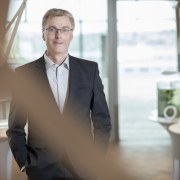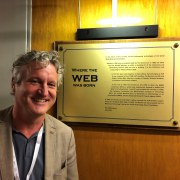Evidence for change: using tools to track and reduce the environmental impact of creating exhibitions
It takes hundreds of decisions to develop and deliver an exhibition. How can we be sure we make the most environmentally sustainable choices? Which materials are better to choose: a sustainable product with a short lifespan or a more robust, but less sustainable material with a longer lifespan?
This session brings together case studies from institutions across Europe to discuss their approach to recording and analysing the carbon and environmental impact of their exhibitions.
All at different stages of their journey towards understanding their environmental impact, the speakers will discuss the different tools they have developed and use. We’ll discuss lessons learned, challenges faced and the ways forward in this honest and supportive forum.
Finally, we will put the tools to the test! Participants will be invited to select materials and analyse them through the different carbon-tracking or life-cycle analysis tools to see if they give the same outcome.
This session is part of the Biodiversity and climate crisis conference track.
Outcomes: what will participants get from this session? Skills, knowledge, experience etc.
Speakers will share experiences, lessons learned and future plans for capturing and understanding environmental impact – and the challenges faced! The audience will be invited to join in - collectively learning how to improve our sustainability decision making. The interactive session will focus on practical, usable examples and tools that can be used to capture data to inform choices. It will provide a supportive networking opportunity for those working towards the same goal.
Facilitator
Exhibitions and Displays Officer
Session speakers
Director Exhibition Development
Measurements, figures – decisions! Experimenta’s new building, including the exhibitions, meet very high sustainability standards. However, it is challenging to really measure the carbon or environmental footprint as an institution and look for improvements. How can we identify reduction-measures with real impact? We are making decisions every day on many different levels. Do they really add up or are we moving in different directions? Sustainability requires teamwork and the joint effort of the whole institution. How do we implement sustainability throughout Experimenta?
Since September 2020, Bruns has formed a group of 7 people throughout the company that deals with our sustainable strategy to become carbon neutral in 2030. Bruns is a company where hard facts and practical solutions are most important to really do something for a better world. We sort out different ways of measuring, one of them being the life cycle assessment tool in Solid works, our engineering program. With this tool we can engineer the exhibits proofing the better choice of materials. We will briefly introduce this tool, how it works and show several practical cases of exhibits.
Exhibitions & Displays Manager
National Museums Scotland
Since April 2022, National Museums Scotland has been recording and reporting carbon emissions for all of our activities. The Exhibitions and Design department has developed a Sustainability Log to calculate the emissions produced and materials used for all of our work. One year on, what have we learnt from the data we have collected? How is this helping us to reduce our emissions? What challenges are we facing?
Project Manager in Sustainability
At Universcience, we aim to reduce our operational carbon footprint by 16% by 2025 and by 40% by 2030. After a carbon footprint for the whole establishment, the target is now to reduce emissions for exhibitions. “Climate Emergency,” opening in early 2023, will be a test case. Thus, we are working on a new calculator that will be included in the procurement process to help us to choose the best option to control our impact and emissions. How could this tool affect our processes? How is the emphasis on carbon emissions (“the carbon tunnel”) affecting our perceptions and decision-making?




